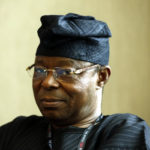Andrew Grove is a former CEO of Intel Corporation, the conglomerate that manufactures processor chips. In the late 90s, he wrote a book titled “Only The Paranoid Survive” ; a classic on change and how it affects the organization. In it, he tells the story of how, under his leadership, Intel was able to anticipate and adapt the changes that had occurred in the ICT industry up until the time he was writing. According to him, the curve of change can also be referred to as a strategic inflection point which a leader must develop an acute capacity for identifying, embracing and using to great advantage.
Strategic inflection points have to do with fundamental change in any business, technology or strategy. Business leaders ignore these constantly evolving inflection points at their own peril. “Business success,” Grove says, “contains the seeds of its own destruction. The more successful you are, the more people want a chunk of your business and then another chunk and then another until there is nothing”. He also stated that “the star of a previous era is often the last one to adapt to change, the last one to yield to the logic of a strategic inflection point and tends to fall harder than most.” He is also of the opinion that inertia, not necessarily mistakes is what sounds the death-knell of most organizations. In his own words, “most companies don’t die because they are wrong; most die because they don’t commit themselves. They fritter away their valuable resources while attempting to make a decision. The greatest danger is in standing still”
It is bad news when you are at the receiving end as the subject of a strategic inflection point but it is welcome news when you can be the cause of one! You can either be a champion of change or a victim of it! Those who wait for change to creep in on them soon discover – usually too late – that they end up as casualties of the process. They are changed (I mean replaced!). The dinosaurs of the future will not be those who changed too rapidly. It will be those who got so big, comfortable and complacent that they lost the capacity to shed the weight of tradition and strangulating systems and structures to constantly reinvent themselves for sustained relevance.
When a new leader takes over the reins of an organization, he wants to make an impact to justify his position. Although a change in leadership may not necessarily mean a change in corporate vision, it would definitely signal a change of strategy. The change in leadership is also not necessarily an indictment of previous leadership. In actual fact, a leader may have stepped into the shoes of a predecessor that he himself considers too large for him (the successor) to fill. Nevertheless, he wants to be able to not only build on the records of such sterling predecessor but leave footprints that are discernible and positively challenging to his own successor. This is what I call the IMPRINT factor.
An imprint is a deep impression or mark that is to all intents and purposes virtually indelible. You do not even need to head the organization before you can leave an imprint on it. It’s a decision anyone can make. It’s about making up your mind to make a mark by making a positive difference while you work with the organization or live within a community.
How does anyone leave an imprint in any organization? We use the word as an acronym I.M.P.R.I.N.T.
It begins with Ideas. People of ideas easily attract attention in any organization. They are mobile repositories of future possibilities. Organizations that want to have a place in the future must suffuse their operations with fresh ideas. Quite often, when organizations are deluded into thinking that they have arrived, inertia sets in. The leaders routinely forget that a timely idea birthed the organization and strategic ideas and implementation fuelled its growth!
In governance, many leaders get into office on the strength of their ideas and hit the ground running with implementation only to get to a point and start coasting in self-congratulatory complacency as the same old achievements are brandished year after year ad nauseam.
Lesson? If ideas birthed it, ideas must nurture it! Whatever you birthed in radical ideas cannot be sustained in paralyzing routine. To lead impactful change therefore, you must be a person of ideas and be receptive to new ones. In building an idea bank, no idea must be considered absurd or stupid. The ideas that end up ruling a generation were initially pooh-poohed at the onset! After inventing the incandescent light bulb, Thomas Edison practically went door to door, with many fruitless attempts, to persuade people to even try it out. Today, as they say, the rest is history! Leaders who cannot generate or embrace new ideas simply preside over their organization’s move in the direction of the dodo, an extinct bird that was so complacent that it could not mate and thus could not reproduce itself!
Remember, the sky is not your limit, God is!
You May Also Like:
Nine rules for successful collaboration







